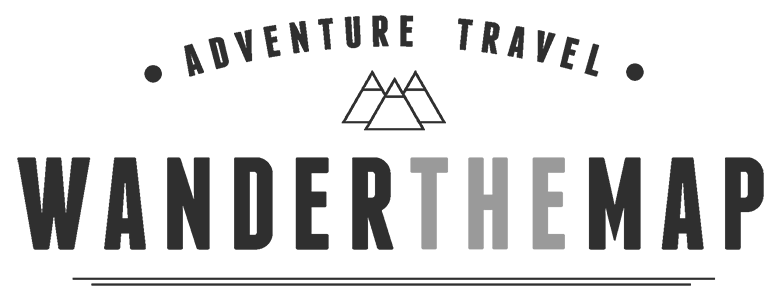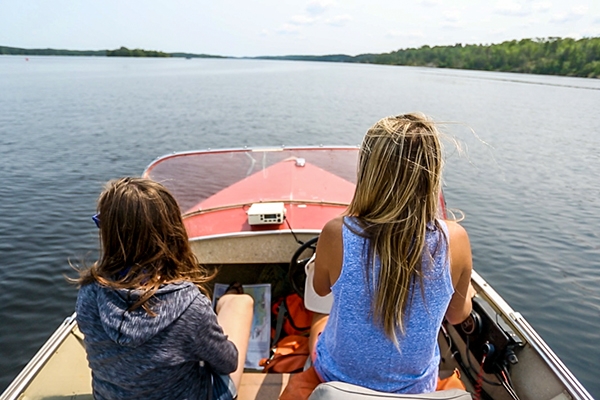
05 Apr Mini Guide to Voyageurs National Park
Voyageurs National Park is a water-based park located in northern Minnesota along the border of Canada. Consisting of four large lakes, a number of smaller lakes and several rivers, the park is best explored with a boat, but there are still plenty of land-based experiences offered, as well. You will find plenty of wildlife, beautiful nature and endless water adventures in this national park located in the land of over 10,000 lakes.
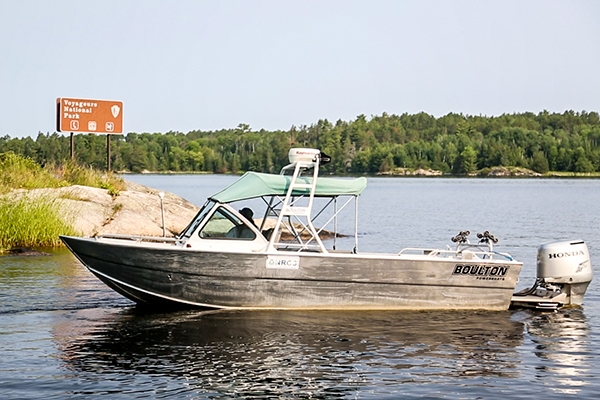
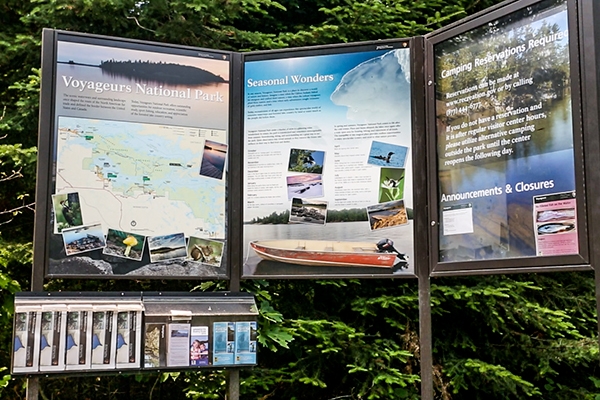
Our Experience
We spent a couple of days exploring Voyageurs National Park, and had wonderful weather despite the haze lingering over the skies from the unfortunate Canadian Forest Fires. The first night Ebel’s Voyageur Houseboats graciously let us stay on one of their docked houseboats. We arrived late in the evening and loved spending the night on the warm and beautiful boat—we loved it so much that we are definitely hoping to plan an entire week at the park in a houseboat soon!
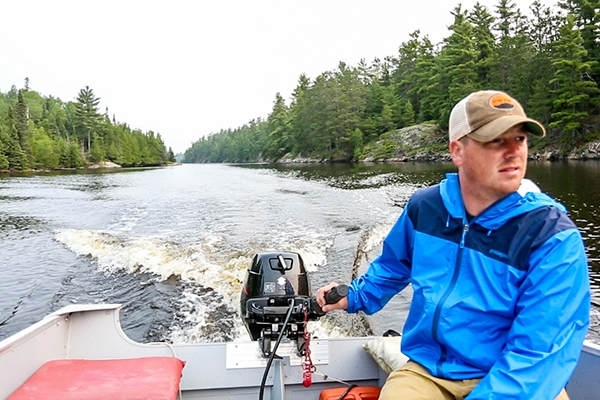
The next day was spent exploring the park, mostly via boat, with Alyssa from Explore Minnesota. Our first stop of the day was the Ash River Visitor Center where we chatted with one of the rangers, checked out the historic Meadwood Lodge, posed for a few photos in the traditional Voyageurs canoe, and soaked up the gorgeous scenery. We then spent some time out on the boat touring the park before making our way to the Kettle Falls Hotel for lunch followed by light hiking to check out the Kettle Falls Dam and Rainy Lake.
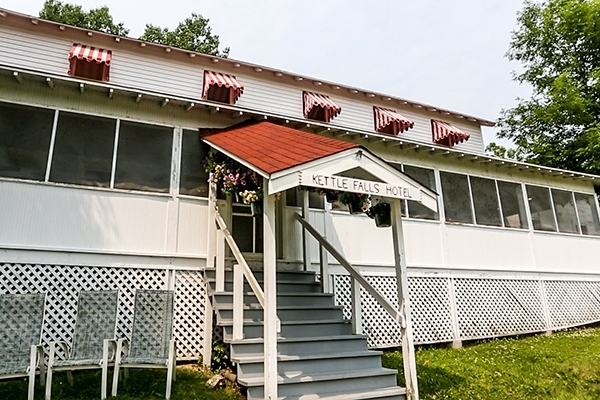
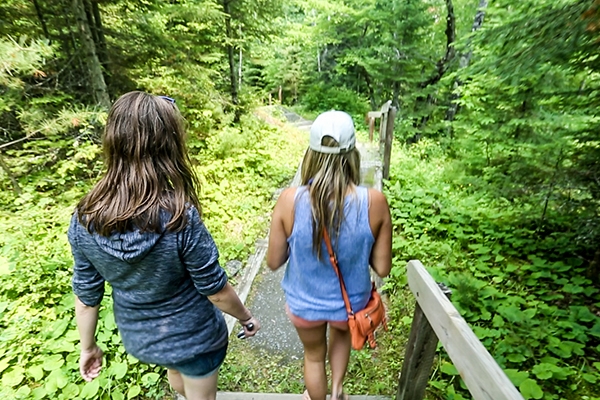
After a full day of exploring, we made our way to our campsite, which is accessible only by boat. We loved that these campsites are so secluded and private. The only people we saw the entire time we were at our campsite were a few boaters passing by. During our time in the park, we were able to see deer, bald eagles, loons, and many other birds. Our final morning was once again spent in the boat, which honestly, is the perfect way to spend a summer day in Minnesota—it doesn’t get much better than that!
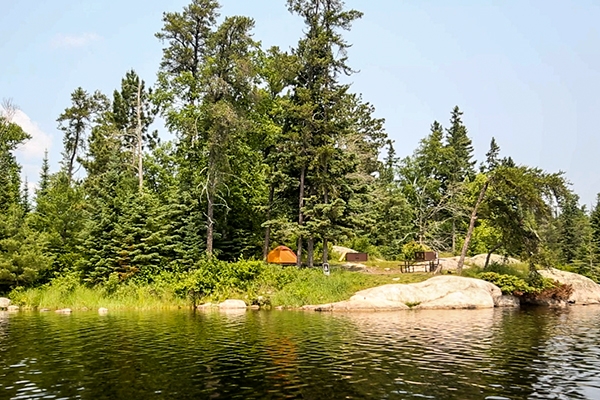
Park Facts and History
- Voyageurs National Park was established on April 8th, 1975.
- The park is 218,054 acres and 84,000 of those acres are made up of water.
- The name of the park comes from the French-Canadian fur traders called the voyageurs. They traveled by canoe and were the first European settlers to travel heavily through the area.
- There are hundreds of islands and four main lakes within the park. The four main lakes are Rainy Lake, Namakan Lake, Kabetogama Lake, and Sand Point Lake.
- The park is 55 miles long, and the northern border of the park is shared with Canada.
- Although it’s best to explore the park by boat as there are many areas only accessible via the water, you do not need to bring your own boat with you. There are several businesses in the area that will rent you a boat or houseboat. If you prefer to let someone else do the driving and navigating, you can also hop on a boat or canoe tour of the park.
- There are three visitor centers in the park: Ash River, Kabetogama and Rainy Lake. The only roads within the park are access roads that lead to the three visitor centers; however, in the winter, a 7 mile ice road is created on the frozen lake.
- The park is has over 200 campsites consisting of front country campsites, backcountry campsites and houseboat sites and all are accessible via boat only.
- Voyageurs National Park is a great place to watch the northern lights on nights they can be seen as the light pollution in the area is very low. Keep an eye out on nights with a good aurora forecast and you might be in for a treat!
Getting There
Voyageurs National Park is about 4.5 hours north of Minneapolis and St. Paul, and the Rainy Lake located partially within the park’s boundaries spans the border between the United States and Canada. Driving is the best way to reach the park, but once you get there, a boat is necessary to get into the park and explore beyond the Visitors Centers and the perimeter. You can bring your own boat, rent a boat or houseboat, join a canoe tour with the park rangers or take a day trip boat tour that operates in the summer months. There are also water taxis that run to and from various lodges to popular spots in the park.
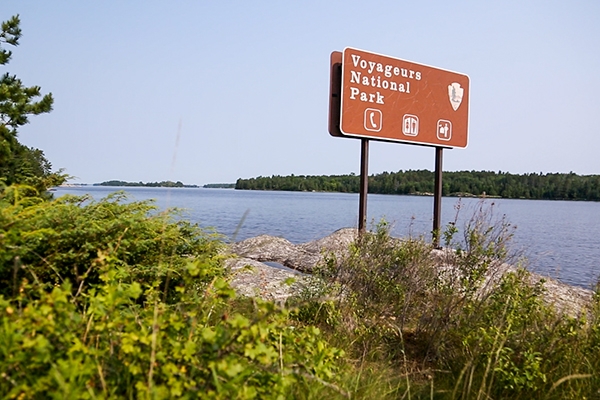
Wildlife
While many of the park’s wildlife residents are a bit elusive and harder to spot such as moose, gray wolves and black bears, there are plenty to be found throughout the park. Birds such as bald eagles, owls and loons, and deer are perhaps the easiest wildlife to spot in the park, and you can also find plenty of fish, beaver and otters in the water.
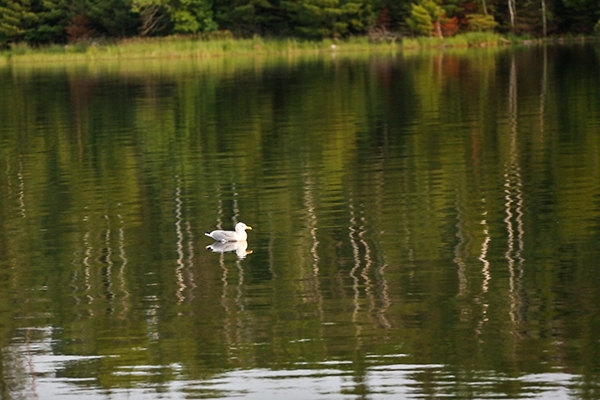
Trees such as aspen, birch, spruce, fir, pine, oak, and maple can be found everywhere you turn, and wildflowers and berries are plentiful.
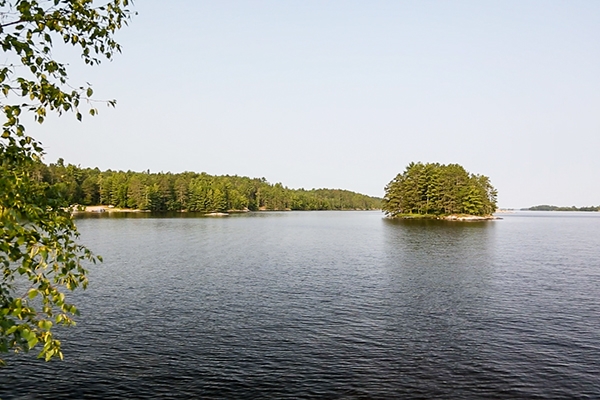
Things to Do
Since so much of the park consists of lakes and rivers, the most popular activities in the park revolve around the water. You can spend time boating, fishing, paddling in a kayak, canoe or SUP, or swimming. Hiking, bird watching, camping, exploring the Kettle Falls Hotel and Kettle Falls Dam, and stopping at the visitor centers are some of the land based adventures that you can enjoy at the park.
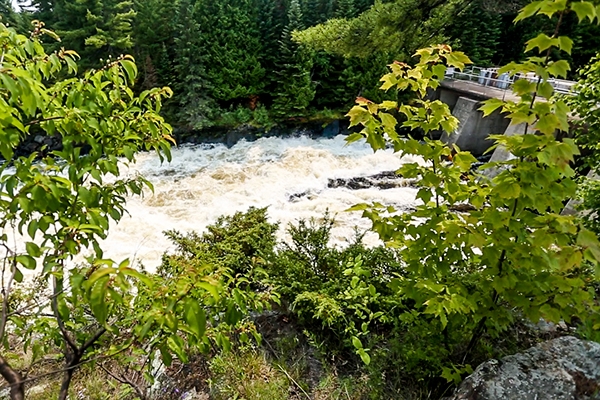
While most people think of Voyageurs as a summer destination there is still plenty to do once the temperatures drop well below freezing. In the winter, you can snowmobile, hike, snowshoe, ice fish, sled, drive the ice roads, and cross country ski, to name a few.
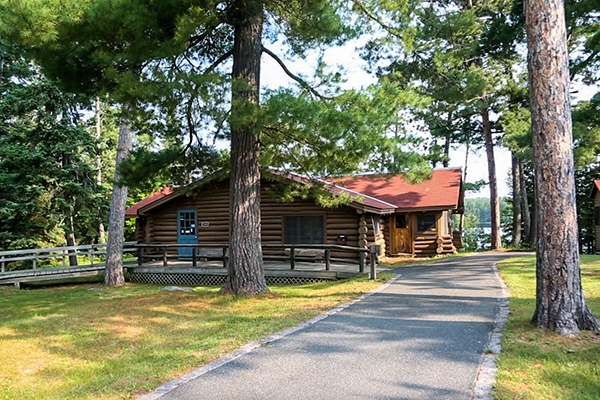
There are several ranger led programs offered in the park—there are a wide variety of boat tours available during the summer through the beginning of fall. Some of the boat tours are canoe trips that explore the life of a typical historic voyageur that once explored the area, while others are larger boats or pontoons. Other tour options and ranger activities offered are garden tours exploring the native plants in the area, lantern lit ghost tours in the evening hours, twilight history walks, campfire celebrations, and guided hikes.
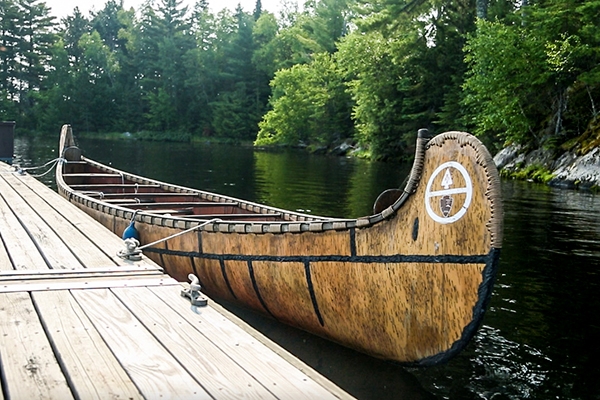
Where to Stay/Accommodations
No matter your preference, you are sure to find some accommodation at Voyageurs to meet your needs. There are plenty of cabins for rent, as well as lakeside resorts if you prefer running water and a warm shower. For those who like to take a more rustic approach, you can camp at one of the many boat up only campsites located throughout the park. If you don’t have a boat and would still like to camp, there are several basic campgrounds located nearby the park.
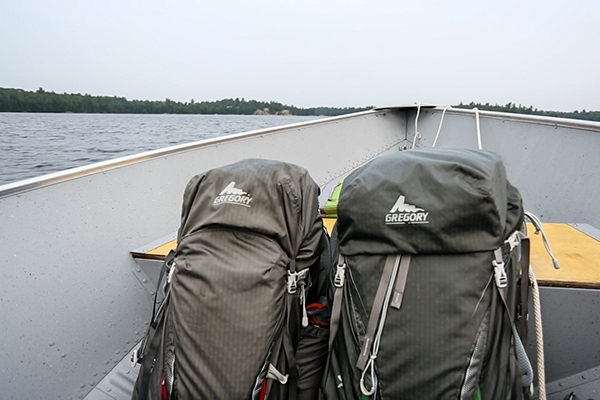
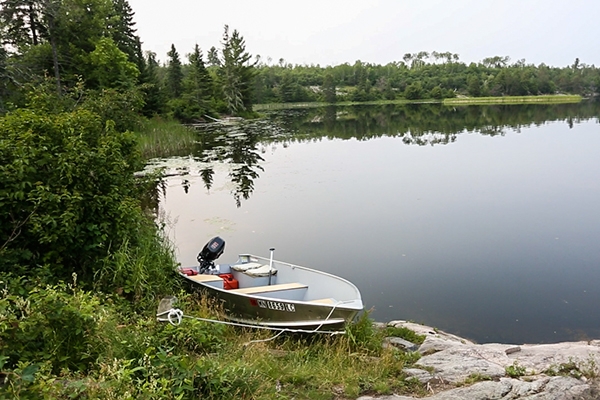
For accommodations right in the middle, you can rent a houseboat from one of the four houseboat companies that service the park. This gives you easy access to the seclusion of staying on the water, but still allows for a bathroom, kitchen and electricity—pretty much the best of both worlds!
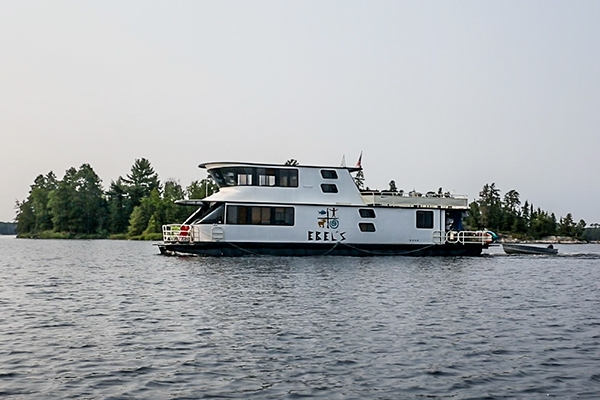
As I mentioned, campsites within the park can only be accessed via a boat and not with a car. If you decide to rent a houseboat, there are houseboat campsites, as well. Both houseboat sites and tent sites need to be reserved in advance via the National Park website.
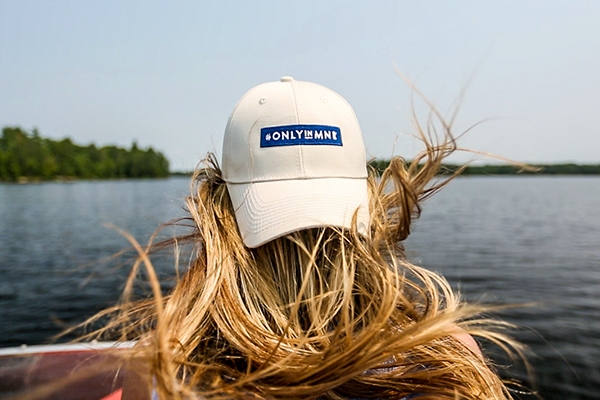
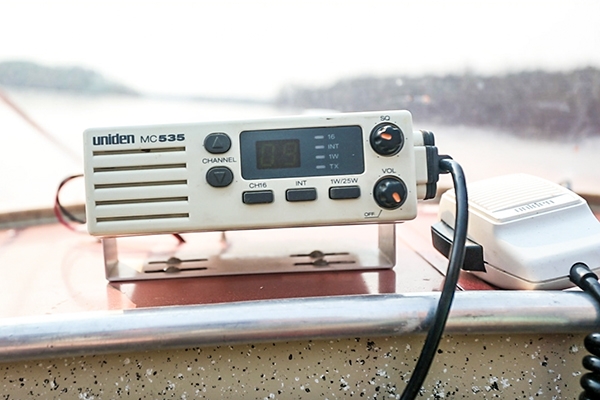
Essential Info
- Permits are not required for day use of the park.
- Campsites require an advanced reservation at least one day prior to your camp start date. Permits must be printed before you arrive and displayed at your site.
- Fishing is allowed throughout the park except for Beast Lake on Kabetogama’s Peninsula, as long as Minnesota State fishing regulations are followed. To fish on the Canadian side of the border, you need to obtain a Canadian fishing license.
- There are no special restrictions for boat motors in the park, as long as they meet state and federal regulations, but watercraft such as jet skis are not allowed in the park.
- Many resorts offer water-taxis to the Kabetogama Peninsula, and there is a water-taxi that runs to Kettle Falls Hotel and the Rainy Lake Visitor Center.
- If you decide to drive a boat through the park on your own, make sure you have a map and understand the rules and safety markers as well as the international border rules. Watch out for shallow areas, submerged rocks and wind–they can test the skills of even experienced boaters.
- In order to go ashore in Canada, you need to report to a Canadian customs office, and when returning to the United States, you need to report to a U.S. customs office unless you have special documentation allowing otherwise.
- Dogs and other pets are allowed in developed areas of the park such as front country campsites or visitor centers, but they are not allowed on any trails or portages.
- Don’t forget bug repellent–Minnesota has plenty of mosquitoes in the summer months depending on the weather.
- You can use dead and downed wood for campfires, but you may not cut down any live vegetation or trees or dead standing trees. The only exception to this rule is if there is a “No Wood Gathering” sign posted–then no wood can be gathered, even downed and dead wood.
- Edible species can be collected for personal use in quantities of up to one gallon per person per day–these species include strawberries, blackberries, raspberries, cranberries, blueberries, wild rice, chokecherries and rose hips.
We are working on a goal to visit every national park in the United States, and along the way we are creating mini guides to each park showcasing the park highlights, things to do, accommodations, essential info and a general overview. To see more of the mini guides we’ve created, head over to our National Park Project page. And, always remember to confirm any information directly with the park before departing–information and details may change and we want your trip to go as smooth as possible!
